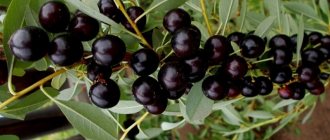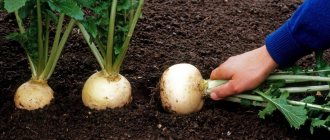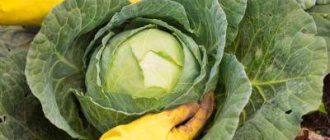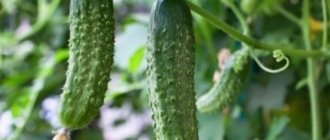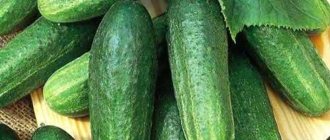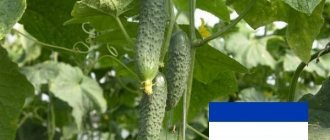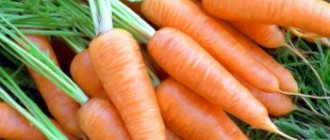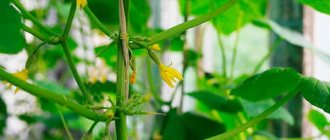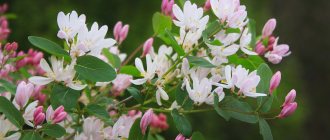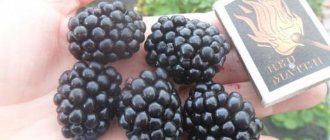Bravo
The table variety “Bravo” was bred at the West Siberian vegetable base and approved for use in 1997. It is considered a very productive, unpretentious and tasty variety.
It can be grown from Moldova to the Ural Mountains.
The characteristics of this variety are as follows:
- fruit shape – round;
- fruit color is dark red, leaf color is dark green;
- weight – 200-780 g;
- the pulp is dark red, tender and juicy, there are no rings;
- taste – sweet;
- average ripening period - from 70 to 100 days;
- yield – 6.6-9.0 kg/sq. m;
- suitable soil type - loam, clay;
- has high keeping quality;
- sugar content – 15.8-17.9%;
- affected by cercospora blight, damaged by beet midge.
The sweetest beets
The high sugar content of root vegetables means they are suitable for processing. These beets are also very good fresh and for making juice. It can also be included in children's diets.
An ordinary miracle
A variety from the mid-season category. The taste of this beet is very balanced, the flesh is tender. Root vegetables are round or slightly flattened, weighing on average 300-450 g. Sugar content - 16.5-17.8%.
Ordinary miracle beets have a very balanced taste
Bravo
A popular mid-season variety, specially bred for cultivation in Western Siberia and the Far East. The variety rarely suffers from cercospora blight, but for some reason the beet flea beetle has a special love for it.
Bravo beets suffer from beet flea beetle attacks more often than other varieties.
Root vegetables are almost round. The pulp is dense, but tender and juicy. Weight varies from 200 g to 780 g. The taste is excellent, the sugar content is very high (15.8–17.9%). The percentage of root crops rejected is no more than 2–8%. Productivity - 6.5–9 kg/m².
Kozak
An early variety, however, it is also suitable for long-term storage. It is recommended to cultivate it in the Central region. Advantages include resistance to cercospora and flowering.
Kozak beets are resistant to cercospora blight and do not suffer from flowering
The roots are elongated, suberization is moderately pronounced. The weight of beets is 180–290 g, sugar content is 15.7%. The yield is not bad - about 7 kg/m².
Mulatto
The most suitable regions for cultivation are the Volga region, the Black Sea region and the Far East. The variety is widely used in cooking, but is also suitable for long-term storage. Mulatto is a mid-late beet. The harvest is harvested 125–130 days after seed germination.
Mulatto beets - a popular mid-late variety
Root vegetables are almost round. Suberization is absent or very weak. Average weight - 160-360 g. Sugar content is very high - 14.2-14.6%. The percentage of defects depending on care is 2–18%. The variety is valued for its keeping quality and transportability, not only by amateur gardeners, but also by farmers. It is also little susceptible to sudden temperature changes.
Video: what Mulatto beets look like
Ataman
The variety comes from Germany. There are no restrictions regarding the growing region. Resistant to color fade. It tolerates low temperatures well, but does not like high air and soil humidity.
Ataman beets are quite cold-resistant, but sensitive to waterlogging
Root vegetables are cylindrical in shape, with smooth skin. Beets weigh about 280 g. Sugar content is 14.8–17.7%.
Video: the sweetest beet varieties
Single shoot
This table variety was bred in 1976 at the All-Russian Research Institute for Selection and Seed Production of Vegetable Crops. Used in the Northern, Northwestern, Central, Central Black Earth and Middle Volga regions.
Variety characteristics:
- the shape of the root crop is round and round-flat;
- color – dark purple, smooth surface;
- pulp – dark burgundy, juicy, tender;
- weight – 297-314 g;
- considered an early ripening variety, but can ripen from 80 to 130 days;
- yield – 4.0 kg/sq. m;
- soil – loam, clay;
- Suitable for long-term storage.
Bordeaux 237
The variety, discovered in 1943, is approved for use throughout the Russian Federation. This is one of the most popular and studied varieties. It is considered heat-loving, but is drought-resistant.
Variety characteristics:
- fruit shape – round with a small head;
- petiole – bright pink, length – 20-31 cm;
- surface – rough;
- weight – 232-513 g;
- pulp – intensely dark red;
- characterized by good keeping quality;
- relatively resistant to diseases, can be affected by cercospora and peronospora;
- refers to early varieties - the fruit is formed in 85-95 days;
- yield – 3.5-8.0 kg/sq. m;
- soil – loam, clay.
Mona
A variety that was created jointly by breeders of Semco Junior CJSC and a Czech company. Used throughout the Russian Federation since 1991.
Variety characteristics:
- fruit shape – cylindrical;
- color – red, leaf color – green-red;
- weight – 200-330 g;
- the pulp is dark red, tender, juicy, the rings are slightly pronounced;
- yield from 5 to 6 kg/sq. m;
- has good keeping quality;
- full ripening period – 75-100 days;
- the taste is good.
Used for storage, canning and growing into bunched products.
Fodder beet varieties
These vegetables are grown to feed domestic animals - cows, pigs, rabbits, horses. The fruits are oval, conical, spherical. The most productive beets are considered to be bag-shaped, cylindrical, elongated cone-shaped beets. Its weight varies from 1.5 to 2.6 kg. During growth, an abundant root rosette of leaves is formed, which can be used to feed livestock.
Eckendorf yellow
This variety has bag-shaped fruits weighing 880–1750 g with very juicy white pulp. Time to ripening – 120 days. Productivity is more than 1000 centners per hectare. Beetroots are easily pulled out of the ground, have an excellent presentation, and tolerate transportation well. The plant is not afraid of drought, cold, and practically does not bloom. Cost (1 kg) – 650 rubles.
Ursus
The variety was bred by Polish breeders and is multi-sprouting. White beets are bag-shaped with juicy pulp, weighing up to 6 kg. The period of full ripening is 135 days. 1250 centners are collected from one hectare. Harvesting is very easy by hand, since the fruits are little buried in the soil - only 40%. Cost (1 kg) – 660 rubles.
Centaur
Another hybrid from Polish breeders belongs to the multi-sprouted semi-sugar type. White semi-oval vegetables, weighing up to 2.9 kg, have dense, juicy pulp. Productivity is 1100 c/g. The fruits ripen in 155 days, are not afraid of drought, and grow on any soil. Cost (0.5 kg) – 550 rub.
Poly's record
Cylindrical beets weighing up to 5 kg are recommended for manual harvesting. The color of the root vegetables ranges from red to soft pink, the flesh is pinkish, very juicy. Vegetables practically do not crack, the plants are multi-sprouting, are rarely affected by pests, and do not get sick. Up to 900–1200 centners of crops are harvested per hectare. Ripening period – 120 days. Cost (1 kg) – 990 rub.
Valentina
This variety was bred in 1999 for use in the North-West region. This variety is valued by gardeners for its high degree of single-seeding and cold resistance.
Variety characteristics:
- leaf shape – triangular, color – dark green with red veins;
- the shape of the root crops is leveled;
- fruit color – dark red;
- weight – 170-333 g;
- the pulp is dark red, with faint rings;
- ripening time is average;
- yield - 2.8-4.4 kg/sq. m;
- has good keeping quality;
- soil – loam, clay.
Growing technology
Sugar beets are demanding of heat, light and humidity. Does well in moderate sunny climates. Equally poorly tolerated by prolonged heavy rains and drought. The optimal temperature for germination is +20…25°С, for growth and sugar synthesis – +30°С.
Predecessors for beets in crop rotation
Sugar beets are not grown as a monoculture. It is sown after winter wheat and rye, some root crops, such as onions, potatoes, and representatives of the legume family.
If the same field is often sown with sugar beets, pathogens of characteristic diseases and pests accumulate in the soil, primarily the beet nematode. Fodder and table beets, spinach, and cruciferous vegetables (cabbage, radishes, mustard, rapeseed) are also susceptible to it. The break in planting such crops should be from 3 to 7 years.
Preparing the soil for sowing
Sugar beets love well-drained, loamy, soddy-podzolic soils, as well as chernozems and peat bogs. It is especially demanding on soil acidity, the optimal pH is from 6.5 to 7% (slightly acidic, neutral).
Before sowing, the soil is enriched with organic and mineral complexes, it must be plowed and leveled. Root crops need good aeration and drainage, and large clods of soil and weeds can inhibit the development of root crops. A distance of at least 50 cm is left between the furrows so as not to crowd the roots and interfere with irrigation.
Reference. To prevent diseases, wood ash and boron are added to the soil. Ash reduces soil acidity, and boron is not readily available in soils with high pH levels.
Seed preparation
At seed factories, special processing processes are carried out that accelerate the emergence of seedlings and increase the productivity of sowing work:
- Pelleting is the covering of seeds with a protective nutrient coating from a mixture of neutralized peat, humus, adhesive (mullein or polyacrylamide), mineral and bacterial fertilizers and growth stimulants.
- Enveloping with protective and stimulating substances against pathogenic microorganisms.
On an industrial scale, mechanized seeders are used, and no additional seed preparation is performed. When growing beets for personal needs, the seed material is pre-soaked in warm water for 8-10 hours, for example, overnight.
Sowing technology
Sugar beets are sowed when the soil has warmed to at least +6°C. The culture is not afraid of light frosts, but for growth and development it requires a temperature of at least +20°C. For planting, choose a sunny area, since in the shade the beets grow into green mass, rather than root crops.
Seeds are planted in fertilized and moistened soil to a depth of 2 to 4 cm, a distance of 50 cm is maintained between rows. Under favorable conditions, seedlings appear on the 4-5th day.
Crop care
Sugar beets react poorly to stagnant water , so the drainage system and regular loosening of the soil are of particular importance. Watering on loose textured soils is carried out twice a week, on heavy loamy soils – once a week. In order for root crops to accumulate the maximum amount of sugars, watering is stopped two weeks before harvest.
Weeds interfere with the normal growth of plants - they compete with industrial crops for nutrients in the soil and sunlight. For good yield, hand weeding and inter-row harrowing are necessary.
Complex fertilizers are used as top dressing: “Nitrophoska”, “Nitroammofoska”, “Ammophos”, “Diammonium phosphate”.
Depending on the type of soil, microfertilizers may be required:
- copper-containing – on soddy-podzolic soils;
- manganese, cobalt and molybdenum - on leached black soil.
Protection from pests and diseases
Dangerous for sugar beets:
- Corneater is a fungal disease. It affects mainly young plants (before the formation of the second pair of leaves), resulting in rotting of the roots.
- mildew (downy mildew). It is of fungal origin and affects above-ground organs, on which a gray-violet coating forms.
- Cercosporosis is an ash-colored spot with a red-brown border, caused by the development of a fungus. Promotes the accumulation of harmful nitrogen in fruits.
- Fomoz (zonal spotting). It appears in the form of yellow or light brown spots with concentric zones; black dots appear inside over time - accumulations of fungal spores.
- Ascochyta blight - bluish-green, gradually turning brown round spots.
- Rhizoctonia (red rot). Affects roots. It looks like depressed spots covered with dark purple mycelium. Leads to the destruction of the crop.
- Fusarium rot. It begins with blackening of the roots, and in the underground part there is excessive development of lateral roots and tissue necrosis inside the root crop.
- Dry sclerosis - dry spots and longitudinal cracks on the fruit.
- Scab is scab-like crusts or cracks that gradually develop into corky tissue.
To combat diseases they use:
- biological methods: stubble peeling, deep plowing, weed removal, attracting beneficial organisms such as ladybugs, etc.;
- chemicals – fungicides and pesticides.
Harvesting and storage
It takes 110-140 days for sugar beets to ripen.
Signs of ripeness are:
- yellow leaves;
- exposure of the upper part of the root crop.
Harvesting is possible manually or using special equipment.
Store root vegetables in a cool, well-ventilated room, protected from direct sunlight.
Cylinder
The cylinder is an achievement of breeders twenty years ago. The variety can be grown in all regions of the country.
Variety characteristics:
- fruit shape – elongated, cylindrical;
- diameter – 4-7 cm, length – 12-16 cm;
- mid-season variety – 120-130 days;
- pulp – dark red, without rings;
- fruit weight - from 250 to 600 g;
- yield – 7-10 kg/sq. m;
- leaves are medium sized, light green;
- has good keeping quality;
- weakly susceptible to disease;
- taste – sweet;
- sensitive to low temperatures;
- soils – loams, clay;
- Suitable for canning and processing.
Late varieties
Rival
Beet variety Rival
Beautiful beets ripen in 120–130 days and are distinguished by stable yields and excellent preservation. Root vegetables in the shape of oblong cylinders with an elongated tip weigh 250–300 g. The skin is burgundy, shiny, the flesh is a uniform dark red color, fine-fibered, with a pleasant taste. The peculiarity of Rival is the speed of cooking, ease of cleaning and chopping.
The plantings require watering, but are not too susceptible to flowering and cold weather; the harvest is harvested until late autumn. Vegetables harvested in dry weather and air-dried are stored in cellars without loss until mid-spring. The yield of small one-dimensional fruits is 45–70 kg per 10 square meters. m.
Citadel
An excellent variety bred in the Czech Republic is distinguished by its tasty flesh of a thick burgundy color without a pronounced ring pattern and an attractive cylindrical shape. Harvesting begins 110–130 days after mass germination. The fruits are oblong, weighing 180–360 g, with thick, glossy skin.
Productivity can vary from 20 to 40 kg per 10 square meters. m. Preservation is very good, until the end of May. Spectacular, shelf-stable fruits have an excellent taste and rich tone that does not fade when cooked.
Khavskaya
Gardeners have long appreciated this variety, characterized by uniform ripening and single-germinate seeds. Round or flat-rounded fruits are harvested 120–133 days from germination. The leaf rosette is compact and can be susceptible to fungal infection in cold, damp weather, but the root crop itself is resistant to rot.
Khavskaya produces large root crops, weighing 300–500 g, which have excellent taste and excellent preservation until the end of spring.
Cylinder
This variety can be specially presented as evidence to all those who believe that elongated root vegetables are worse than the usual round ones, in order to rid them of this prejudice. Cylindra has a lot of advantages - it can be harvested for bunched products before all the others, and almost never gets sick, although, of course, its main value is that its pulp is softer than most other beet varieties - dark, without rings and very sweet, you can eat it with pleasure even raw, and it is more convenient to grate such beets than round ones. The Cylinder got its name from the shape of the root crops, which reach an average of 20 cm in length with a diameter of 4-7 cm - a kind of “beetroot carrot”. The skin is thin and very easy to remove. As for the shortcomings (except for the unusual appearance, which is difficult to call a disadvantage), they only need to be specially invented, but have not yet been found.
Libero
This is a beet variety grown in the Netherlands. Recommended by the State Register for cultivation in the Central region since 1999.
Gardeners value this variety for its early production and relative resistance to bolting.
Libero characteristics:
- leaves are oval-shaped, green-red in color;
- leaf rosette erect;
- the shape of the root crops is leveled, round;
- weight – 125-225 g;
- head slightly suberized;
- belongs to the category of mid-early;
- The advantages include massive fruit ripening, presentable appearance and good taste;
- yield – 1.8-5.8 kg/sq. m;
- soils – loams, clay.
Mulatto
This variety is not very different from all other table beets. The most suitable regions for cultivation are the Volga region, the Black Sea region, and the Far East. Widely used for cooking, suitable for long-term storage.
Characteristics:
- fruit shape – regular, round;
- 95-98% of commercial products are obtained;
- mid-late beets (125-130 days after seed germination);
- suberization is practically absent;
- weight – 160-360 g;
- little susceptible to temperature changes;
- pulp – dark burgundy, juicy, tender, without rings;
- yield – 2.5-4.4 kg/sq. m.
Sweet varieties and hybrids
Bona
Beet variety Bona
An unpretentious variety of Czech selection produces a harvest within 105–120 days from mass germination. Round, one-dimensional root vegetables, weighing 250–280 g. Glossy skin, colorful red flesh, tinged with purple, dessert taste, with high sugar content up to 12%.
Bona looks exceptional in bright, appetizing salads and marinades. The yield is constant and reaches 68 kg per 10 square meters. m. Long-lasting commercial beets are stored in a dry basement until spring.
Mulatto
A recognized leader in taste, the dark-colored, spectacular Mulatto is suitable for harvesting 125–130 days after mass germination. Round fruits with elastic skin and rich dark red flesh weigh 160–360 g. The sugar content is high, up to 14.5%, which explains the excellent table taste, and thanks to the spectacular dark color, Mulatto is deservedly considered the best salad variety.
The plants are strong and hardy, show resistance to common fungal infections and produce good yields - up to 47 kg per 10 sq. m.
Bonel
Mid-early beets are suitable for harvesting 90–110 days after germination and are recommended for farms in the Ural and Central regions. The smooth fruits are round-flat, beautiful, weighing 250–300 g. The pulp is thick red, the ring pattern is weakly expressed, the excellent sweet taste is due to the presence of sugars in a concentration of about 12%.
Universal beets with high commercial properties are a good choice for planting for sale, they are transportable and have excellent storage properties. Productivity is high, can be up to 81 kg per 10 square meters. m with a commercial yield of up to 98%.
Rocket F1
A mid-season hybrid from Holland that can be grown in the European part of Russia and Western Siberia. Gardeners value the variety for its resistance to flowering and drought. Rocket root vegetables are significantly different from other varieties, as they have an unusual shape.
Characteristics:
- fruit shape – cylindrical, large;
- fruit color is dark red, the surface is smooth, glossy;
- the color of the pulp is purple, there are no rings;
- suberization is weak;
- weight – 220 g;
- sugar level – 11.7%;
- yield – 5-7 kg/sq. m;
- high level of keeping quality;
- diameter of root crops – up to 5 cm;
- full ripening period is 120-125 days.
The importance of making the right choice
When choosing a variety, many gardeners are based on only one factor - high yield. This approach is fundamentally wrong, since even the most productive variety requires certain soil parameters, light and irrigation regimes.
The correct choice of variety should be based on many parameters:
- shelf life;
- taste qualities;
- ripening time;
- drought resistance;
- use of root vegetables;
- productivity.
When choosing a variety, it is better to use special zoned varieties that are adapted to given weather and climatic conditions.
Red ball
Red ball is classified as an early ripening variety. The growing season is up to 105 days. The variety is cold-resistant and suitable for cultivation for summer and autumn harvest.
Characteristics:
- fruit shape – round;
- fruit color – dark scarlet;
- the surface of the fruit is leveled, smooth;
- weight – up to 300 g;
- diameter – 3-3.5 cm;
- the pulp is dark red, juicy and sweet, without rings;
- Color-resistant.
This variety can be stored until April next year, and is also a storehouse of vitamins and mineral salts.
Boiled beets: beneficial properties and contraindications
Unlike most vegetables (tomatoes, bell peppers, cabbage, onions) and greens, this root vegetable retains its beneficial properties after heat treatment. The secret is that the mineral salts and B vitamins present in beets are resistant to heat.
The root vegetable contains a large amount of natural antioxidants (including lutein) and methylated amino acid derivatives, in particular betaine, which regulates fat metabolism, preventing liver obesity. It is a natural anti-asthma remedy that supports respiratory and cardiovascular health. The vegetable increases the body's endurance and prevents hormonal imbalance.
The benefits of boiled beets are as follows [5]:
- increases the body’s protective functions, improves its ability to resist pathogenic bacteria and microbes;
- supplies the body with vitamins A, C, B9, macro- and microelements: sodium, calcium, chlorine, phosphorus, iron;
- supports visual health: prevents the appearance of cataracts and macular degeneration;
- cleanses the body and relieves constipation.
- improves metabolism, participates in the formation of blood cells;
- increases sexual activity in men;
- reduces pain during menstruation in women;
- lowers the level of homocysteine, the excess of which negatively affects the condition of blood vessels;
- gives the body vitality.
Various dishes are prepared from boiled beets, for example, salads with the addition of prunes and nuts. They are seasoned with lemon juice, sour cream, and vegetable oil.
Boiled beets interfere with the full absorption of calcium. Therefore, people with a predisposition to osteoporosis should avoid eating dishes containing root vegetables. In addition, it is worth considering that a boiled vegetable has a glycemic index that is twice as high as a raw vegetable and is equal to 65 [9]. After consumption, it causes a sharp spike in blood sugar, which quickly fills fat cells. As a result, patients with diabetes and anyone who wants to lose weight should abandon the cooked product in favor of the raw one.
Bohemia
This variety appeared recently, thanks to the work of Russian breeders. It has excellent taste, and the main region for cultivation is Volga-Vyatka.
Characteristics:
- shape – flattened, with obvious suberization at the base;
- fruit color – dark burgundy;
- weight – 210-350 g;
- the pulp is dark burgundy, there are no rings;
- quite resistant to fungal diseases;
- has good shelf life without losing taste and attractive appearance;
- mid-season variety - about 70-80 days pass from germination to ripening;
- yield – up to 4.8 kg/sq. m.
Varieties for the Urals
For the Urals, the best varieties are: Bikores, Valenta, Bon-Bon F1, Odnorostkovaya, Bravo, Crimson Ball, Betina, Detroit 2, Boltardi, Scarlett Supreme, Gribovskaya flat A-473, Bordeaux single-seeded, Bordeaux 237, Bona, Mulatka, Virovskaya single-seeded , Crimson Globe, Incomparable A-463, Podzimnyaya A-474, Rouzette F1, Dark red round, Khrobry (Brave), Cold-resistant 19, Cylinder.
The dark variety Odnorostkovaya is early ripening and productive. The vegetative period is 80-130 days. A distinctive feature of the variety is its one- and two-seeded fruits. The shape is rounded-flat or rounded. Weight 300-600 grams. The color is rich, dark burgundy. The pulp is tasty, juicy and tender. Keeps for a long time.
Bicores
The Bikores variety
is a productive, mid-season beet variety. Sweet variety. The color of the fruit is dark burgundy. The shape is round and level. Weight 210-350 grams. The pulp is bright, without light rings, tasty, juicy. About 6 kilograms of fruit are collected per square meter.
Valenta variety
Variety Valenta
Single-sprout, grows in 95-100 days. Weight reaches 300 grams. The shape is oval-round. The pulp is sweet, tasty, dark red. The variety is easy to grow, cold-resistant, and not afraid of disease.
Bon-Bon F1
Variety Bon-Bon F1
This is a beet variety of medium ripening period. The growing season is 120 days. The pulp of the fruit is bright red, without light rings, and tasty. The shape is round, with thin skin. Sowing takes place from April to mid-July.
These varieties easily tolerate sudden temperature changes and cool climates. With good care, the harvest is very abundant. The harvest stretches until the end of September. When planting in spring, at the beginning of growth, it is recommended to use covering material.
Incomparable A463
This variety was bred in 1943 at the All-Russian Research Institute for Selection and Seed Production of Vegetable Crops. Used in the Central and Ural regions.
Characteristics of the Incomparable A463:
- fruit shape – flat and round-flat;
- the color of the fruit is dark red, the head is grayish, the color of the leaves is green and dark green;
- weight – 167-385 g;
- the petiole is elongated, with light veins, the color is intense red;
- the pulp is dark red, with blackish rings;
- early ripening variety - the growing season is 69-99 days;
- yield – 3.0-7.0 kg/sq. m;
- soil type – loam, open ground;
- disease resistance – average;
- The taste of the fruit is sweet.
Yield varieties and hybrids
Pablo F1
Beet variety Pablo F1
The high-yielding popular hybrid begins to be harvested 60–110 days after the mass appearance of sprouts. The weight of the rich red fruit varies - in the early stages it is about 100 g, and in the fall they produce quite large beets weighing up to 500 g. The pulp is red-cherry with a purple tint, very juicy, tasty, with high sugar content and a delicate structure.
Beets are not prone to cracking and are rarely subject to stemming. The hybrid shows excellent stable yield of 60–70 kg per 10 square meters. m, is excellent in any culinary processing - from salads, borscht and canning to caviar and freezing.
Egyptian flat
Mid-season beets are harvested 95–120 days after germination. The flattened root vegetables are practically not hidden in the soil, are easy to collect and, being quite large with a weight of 320–525 g, do not require deep cooking vessels. The skin and pulp are dark red with a purple tint, with a pleasant harmonious taste.
The plants are not subject to flowering, are unpretentious and are able to form juicy, tasty fruits even with a lack of moisture. Yields are above average; Egyptian flat beds can produce from 50 to 83 kg per 10 sq. m. Water the plants moderately, since plantings do not respond well to waterlogging.
Red hero
One-dimensional root crops shaped like an elongated cylinder ripen in 115–120 days. The leaves are large, the rosette is moderately spread out. The root vegetables are burgundy, with rich red flesh, without pronounced rings, weighing 250–550 g.
The harvests are excellent, truly heroic, can reach 105 kg per 10 sq. m. The universal variety is excellent for freezing, preserving the full taste, vitamin and mineral composition, and dense structure of the pulp.
Opolski
This is a table variety, bred in Poland in 1998. It can be used in the Central and Central Black Earth regions. It is recommended to plant in garden plots and farms.
Characteristics of the Opolski variety:
- rosette of leaves erect;
- leaf shape is oval, color is light green with strong anticyanin coloring of the veins;
- fruit shape – leveled, cylindrical;
- fruit color – dark red;
- weight – 158-438 g;
- the fetal head is small, convex, moderately corky;
- the pulp is dark red, tender, juicy, there are faint rings;
- yield in the Central region is 2.5-5.2 kg/sq.m. m, in Chernozemny - 3.1-5.3 kg/sq. m;
- has a high level of keeping quality;
- resistant to Phoma and moderately susceptible to Cercospora;
- soil – loam, clay.
Sugar beet
Sugar beet is an important industrial crop, cultivated in large quantities for the production of sugar and ethanol. Its root vegetables contain 8-22% sucrose. This type of beet was obtained back in the 18th century through artificial selection of table varieties.
Sugar beet is a biennial plant, but is cultivated as an annual for its root crops. The weight of root crops, depending on the variety, ranges from 300 g to 3 kg. The root vegetable is unattractive in appearance, yellowish-white in color, white when cut. Rosette of bright green leaves.
Sugar beets are heat-loving and demanding on soils. It grows best on black soil. The varieties of German selection are the most popular all over the world. In Russia, the varieties most often grown are Bona, Boheme, Nancy, Clarina, Sphinx, and Mandarin.
This type of beet, like table varieties, contains many healthy substances. Modern summer residents have recently begun to successfully master the cultivation of sugar beets on their plots. It is used as a natural sweetener in compotes, jams, baked goods, syrups, and also in salads.
If you are going to use sugar beets in cooking, be sure to peel them, as the skin of the root vegetable has an unpleasant aftertaste.
Pronto
The variety was selected by the Dutch company Bejo Zaden. It can be used throughout the Northern region since 1995.
Gardeners value Pronto for its resistance to flowering.
Variety characteristics:
- leaf shape – elongated oval or oval, color – dark green;
- the shape of the root crops is leveled, round, color – red;
- weight – 110-152 g;
- refers to varieties of medium ripening;
- yield – 1.2-1.8 kg/sq. m;
- is resistant to diseases.
Podzimnyaya A474
A variety obtained at the All-Russian Research Institute for Selection and Seed Production of Vegetable Crops. Approved for use in the North-Western, Central, Middle Volga, Volga-Vyatka and Central Black Earth Regions. Recommends growing it in early spring and winter sowings.
Characteristics:
- leaf shape – heart-shaped, elongated, color – green, becomes pigmented by autumn;
- petiole intensely pink-red, length – 25-35 cm;
- fruit shape – round;
- weight – 369 g;
- mid-early variety – 98-100 days;
- the pulp is dark burgundy, with an excellent, pronounced taste;
- yield – 4.3-6.1 kg/sq. m;
- relatively resistant to cercospora.
Nutritional value and chemical composition
Characteristics of the composition of the average sugar beet:
- 75% water;
- 25% dry matter: 17.5% sucrose, 2.5% fiber, 2.4% pectin, 0.1% protein and ash, + about 2.5% soluble elements - fructose, glucose, nitrogenous and non-nitrogenous substances.
Sugar levels can reach 20%!
- Calorie content: 46 kcal (proteins - 1.6, carbohydrates 9.6).
- Vitamins: vitamin C, vitamin B6, vitamin B5, vitamin PP, vitamin B9, as well as vitamins A, B1, B2, H.
- Microelements: potassium, sodium, phosphorus, calcium, as well as iron, copper, manganese, zinc.
Detroit
It is an Italian variety. It is recommended to cultivate the variety in the Central region, but the experience of gardeners suggests that Detroit grows well in the Far East. The variety is valued for its cold resistance and resistance to flowering.
Characteristics:
- fruit shape – round, even;
- color – red, with a thin, very short axial root;
- weight – 111-212 g;
- the pulp is dark red, without ringing;
- has good keeping quality;
- characterized by average ripening times - 110 days pass from the moment of seedling emergence to full ripening;
- sugar content – 12.3-14.2%;
- yield – 3.6-6.9 kg/sq. m;
- the taste is good.
Suitable for making juices, canning and fresh consumption.
Dark varieties without light rings
The health benefits of beets depend on the intensity of their color. The rich, deep burgundy or dark purple color is due to the presence of high concentrations of anthocyanins. These substances are natural antioxidants. Their ability to strengthen the walls of blood vessels and the presence of antiseptic properties have also been scientifically proven. Accordingly, varieties and hybrids are especially valued, the pulp of which does not have pinkish or whitish rings.
Single shoot
The variety was bred in the USSR. Recommended for cultivation in the European part of Russia, including the northern regions.
Single-sprout beetroot requires picking and thinning of seedlings much less than other varieties
The variety is considered early ripening, but the period of ripening of root crops can be 80 or 130 days. It depends on the climate in the area. A characteristic feature of Odnosprostkova is its one- or two-seeded fruits. Other beet varieties most often produce 4–6 shoots from each seed. Because of this, you then have to carry out picking or thinning, which the culture does not like very much.
Root vegetables are round or slightly flattened. Weight varies from 300 g to 600 g. The taste is good, but not outstanding. The variety is suitable for long-term storage.
Egyptian flat
A variety that has been tested by more than one generation of gardeners and still withstands competition from new breeding products. Gives consistently high yields in the Urals, Eastern Siberia, and the Far East.
According to the ripening period, it belongs to the medium-late category. The harvest ripens in 94–120 days. The variety is valued for its excellent keeping quality. If you create optimal or close to them storage conditions for root crops, 88–90% of the harvest will last until March of next year without losing its presentability, juiciness and taste.
Egyptian flat beet stands out for its very good keeping quality
The root crops are noticeably flattened (this is reflected in the name), varying in size (300–500 g). By the way, this form is often considered an advantage by gardeners - root vegetables are convenient to cut, they can be more compactly folded into a pan when cooking and into storage boxes. The pulp is quite juicy and pleasant to the taste: sweetish, of uniform consistency. The yield is not bad, but not record-breaking (5–8 kg/m²).
Among the undoubted advantages of the variety is drought resistance. Poor (50%) seed germination is often noted as a disadvantage. But this largely depends on the manufacturer.
Boltardi
Dutch beet variety. The state register recognizes this variety as suitable for cultivation in the Central region. But growing experience shows that it produces a good harvest throughout the European part of Russia. The variety is early, but nevertheless excellent for long-term storage.
Boltardi is an early beet, but it stores very well
Vegetables are almost regular spherical in shape, not particularly large (160–370 g). The variety is valued by gardeners for its stable fruiting, little dependent on the vagaries of the weather, and the presentability and one-dimensionality of its root crops. An undoubted advantage is the presence of “innate” immunity to color. As a disadvantage, the yield is not very high, due to the size of the beets (2.7–3.1 kg/m²).
Libero
Another beet variety from the Netherlands. The state register recommends it for cultivation in the Central region, not only for amateur gardeners, but also for professional farmers.
Libero beets are in demand not only among amateur gardeners, but also among professional farmers.
A variety from the mid-early category. The root vegetable is a very dark scarlet color, the characteristic “plug” at the base is practically absent, the skin is smooth. The average weight of one beet is 125–225 g. The Libero variety rarely suffers from bolting.
Among the undoubted advantages of this variety are the massive ripening of root crops, their presentability and good taste. You can also note the keeping quality and high yield.
Bohemia
A relatively recent achievement of Russian breeders. The variety has excellent taste. The Volga-Vyatka region was considered the most suitable region for its cultivation.
Bohemia beets are primarily valued for their excellent taste, but are not without other advantages.
Bohemia is a mid-season beet. The root crop is flattened, with pronounced suberization at the base. The flesh is dark burgundy. One beet weighs 210–350 g. The variety has good immunity to all fungal diseases typical for the crop, and is stored well without losing its taste or visual appeal.
Bordeaux 237
An “old, well-deserved” variety whose competitiveness has been tested by time. It is still one of the most popular.
A variety from the early category, root crops are formed in just 85–95 days. Moreover, this period depends little on what the weather is like. Vegetables are round. Weight varies from 250 g to 500 g. They reach approximately 15 cm in diameter. Root crops stick out about half of the soil, this is normal.
Beet Bordeaux 237 has not lost its popularity for more than 70 years
The advantages of Bordeaux 237 beets include a very good taste that is not lost during storage, and good keeping quality. The short period of ripening of root crops allows it to be planted several times with an interval of 8–15 days, thereby prolonging the fruiting period. The variety tolerates both heat and coolness well and is little susceptible to temperature changes. Productivity is 7–8 kg/m².
Video: what Bordeaux beets look like
Detroit
Despite the name, this beet originates from Italy. The state register recommends for cultivation in the Central region. But the experience of gardeners shows that this variety is very well suited for the Far East.
Detroit beets look very presentable
Detroit is characterized by average harvest ripening times. Approximately 110 days pass from the moment of germination. Root vegetables look very presentable - almost perfectly round, with a thin short root and smooth skin. The flesh is uniform, burgundy. The average weight of one beet is 110–215 g. Sugar content is 12.3–14.2%.
The variety is valued for its stable fruiting and attractive appearance of root crops. This beet is suitable for canning and long-term storage. Detroit is also characterized by good cold resistance, shelf life and immunity to flowering.
Video: Detroit beets
Lark
A Dutch variety popular all over the world. The Russian State Register has recognized it as suitable for cultivation in the Central region and the Urals. Larka is a mid-season beet, but it is suitable for long-term storage. The variety is also good for processing, which is why it is in demand not only by amateur gardeners, but also by farmers.
Larka beets are in demand not only in Russia, but throughout the world
Root vegetables are medium-sized (140–310 g), almost spherical, the flesh is rich scarlet. Suberization is weakly expressed. The percentage of non-commercial defects is extremely low - 6%.
Among the advantages of the variety are consistently high yields, one-dimensionality and external attractiveness of root crops, and good keeping quality. The larka is resistant to flowering, mechanized harvesting is possible. The originator states that the variety has an increased ability to remove heavy metal salts and half-life products of radioactive substances from the body.
Bona
The Russian State Cultivation Register has not established any restrictions regarding the region. Suitable for both fresh consumption and canning. Characteristic and very good keeping quality.
No obvious deficiencies were found in the Bona beet variety.
Beets are from the mid-season category. The root vegetables are almost spherical, with very juicy, tender, sweetish pulp (sugar content - 12%). Suberization is minor. They are one-dimensional (weight - 250-280 g), the taste is very good.
Productivity is average - 5.5–6.8 kg/m². The advantages of the variety are the presentation and uniformity of root crops, suitability for long-term storage.
Renova
A variety of mid-late beet. The crop ripens 100–110 days after germination. Renova is suitable for long-term storage; the fruits do not lose their presentation and benefits for 6–7 months.
Renova beets have almost no characteristic smell, which many people don’t like.
Root vegetables are cylindrical in shape, up to 5 cm in diameter. There is practically no characteristic aroma, which not everyone likes. The average weight of one beet is 180–350 g. The total yield is 7–9 kg/m².
Cylinder
An achievement of breeders twenty years ago. The variety is recognized as suitable for cultivation in all regions. Popular with both amateur gardeners and farmers.
Cylinder is a mid-ripening beet variety. Approximately 120 days pass from the emergence of seedlings to harvesting. Most suitable for canning and long-term storage.
Having just appeared, Cylinder beets almost immediately gained incredible popularity among domestic gardeners
Root vegetables, as the name suggests, are cylindrical in shape. The average diameter is 4–7 cm, length is 12–16 cm. Weight varies from 250 g to 600 g and depends on growing conditions. The taste is excellent. Other advantages are high yield (8–10 kg/m²), low percentage of root crops being rejected. The inherent shape of the beet variety makes it possible to compact the plantings. A significant drawback is sensitivity to low temperatures. If seedlings are subject to return spring frosts, mass flowering is very likely.
Video: description of beet variety Cylinder
Cardial F1
A recent achievement of French breeders. It is recommended to plant the hybrid in the European part of Russia.
Beetroot Cardial F1 is very good in any dish
Medium ripening hybrid. Root vegetables are close in shape to a ball. Suberization is moderate. Weight varies from 210 g to 350 g. Sugar content - 10.3–12.6%. The percentage of non-commercial products is 3–12%.
Kestrel F1
A French hybrid, recommended in Russia for cultivation in the Volga region, the Caucasus and the North-West region. Suitable for long-term storage. The harvest matures in approximately 120 days. The hybrid belongs to the mid-season category.
Kestrel F1 beets are tolerant of transplanting and diving
The roots are almost round, suberization at the base is moderate. One beet weighs 205–375 g. The sugar content is relatively low - 5.7–10%. The percentage of defects is within the norm - 4–16%. The undoubted advantage of the variety is the presence of high immunity. Beetroot rarely suffers from diseases typical for the crop. Also, unlike the vast majority of other varieties, it tolerates picking and replanting without much stress.
Oxblood
Another recent achievement of Russian breeders. The purpose is universal. This beet is also characterized by good keeping quality. A variety from the mid-season category.
Beetroot Ox's blood is a universal root vegetable
Root vegetables are round. Suberization at the base is moderate. The weight of one beet varies from 145 g to 240 g. The taste is wonderful. The sugar content is low - 8–10.5%.
The variety is valued for its consistently high yield, suitability for long-term storage, good frost resistance, and resistance to flowering. Root crops ripen in 110–120 days.
Video: review of beet varieties without light rings
Boltardi
A variety of Dutch selection, approved for use in the Central region in 1998, but Boltardi can produce good yields throughout the European part of Russia. The variety is early, but is excellent for long-term storage.
Characteristics:
- leaves are medium in size, oval in shape, light green in color with a faint wavy edge;
- fruit shape – smooth, round, color – dark red;
- weight – 160-367 g;
- the pulp is dark red, with faint rings;
- the presence of innate immunity to coloration;
- yield - 2.7-3.1 kg/sq. m;
- refers to early ripening varieties;
- suitable for long-term storage;
- soil – loam, clay.
Early beet varieties
Early, or early ripening, beets are grown for preparing summer dishes, for example, cold soup. It is usually not stored for that long, so most often they try to quickly process root vegetables for culinary purposes. Early vegetables are suitable for consumption even raw. Now let's look at the best early ripening beet varieties.
And I
A very early single-growth variety with round-flat roots. Sweet beets of the Aya variety thrive in Siberia, the Urals and the Far East. But it gives a high yield in the middle zone: about 8 kg per 1 sq.m. The mass of the root vegetable is 180-405 g, the pulp is dark burgundy, juicy and tasty. The first harvest can be harvested from mid-June.
Bravo
A productive, unpretentious variety that stores well and is quite rarely affected by cercospora and beet flea beetle. The weight of one round root vegetable sometimes reaches up to 780 g; the tasty leaves are also suitable for food. The pulp is light burgundy, sugary and dense, without rings. In a word, a wonderful specimen for a summer cottage!
- Top 5 most dangerous beet diseases and pests
We figure out what diseases and insects can destroy beets, and find out how to save the harvest.
Boltardi
A variety of foreign selection, resistant to frost and disease. The root vegetables are round, the average weight is 210 g. The pulp is dark red and juicy, the rings are poorly defined. When sown under cover, it is suitable for bunch harvesting.
With late sowing, the Boltardi beet harvest can be stored for 3-5 months.
Beet varieties from left to right: Aya, Bravo, Boltardi
Gribovskaya flat A473
A universal variety that will delight you with high yield (3-6 kg per sq.m.), good keeping quality and delicate taste. The root crops of this beet are amazing: they are flat or rounded-flat, weighing up to 420 g. The pulp will not disappoint either - it is red-violet, juicy, practically without rings.
Detroit ruby 3
Another leader in shelf life and disease resistance. It belongs to foreign varieties and is valued for its beautiful roots and compact leaves. Suitable for bunch collection. Beets grow weighing 80-110 g, the flesh is bright red. Sometimes there are small rings.
Root vegetables of this variety have thin skin, so to prevent them from wilting, immediately after harvesting, remove them from the fresh air and indoors.
Egyptian flat
A versatile, unpretentious variety with unusual flat roots. It is not afraid of diseases and drought, and is also resistant to flowering, which reduces the quality of the harvest. If you plant such beets in your dacha, then you are guaranteed 3-6 kg of tasty root vegetables per 1 sq.m.
Beet varieties from left to right: Gribovskaya flat A473, Detroit ruby 3, Egyptian flat
Libero
For an early harvest, it is worth sowing Libero beets. It has round roots with dark red flesh, but almost no rings. What is important is that the beets grow uniform, with a thin root and smooth skin. The taste is excellent. From 1 square meter you can harvest up to 6 kg of juicy root vegetables.
Nochowski
If you want to grow beets with tender flesh and at the same time resistant to long-term storage, pay attention to the foreign selection variety Nochowski. Its round, dark red root vegetables are incredibly tasty. Probably the whole secret is in a small mass - up to 120 g. The root crop is easily pulled out of the soil, because... usually protrudes 3/4 above its surface. The yield is lower than that of other early ripening varieties, but the taste makes up for this drawback.
Podzimnyaya A474
Are you tired of dealing with beet bolting, which prevents your root crops from growing? Then plant Podzimnaya A474 in the garden bed. The variety was bred for winter sowing and is resistant to bolting. You will receive an early spring harvest of round or oval-round root vegetables weighing up to 360 g with juicy dark burgundy pulp.
Beet varieties from left to right: Libero, Nokhovski, Podzimnyaya A474
Nochowski
A beet variety bred in Poland. It appeared in our country about 20 years ago. The State Register recommends cultivation in the Volga and Black Sea regions. The variety is excellent for making juices and baby food.
Characteristics:
- the shape of the fruit is round, there is moderate suberization;
- fruit color – dark pink;
- the leaves are large, light green, but darken during harvesting;
- beet weight – 150-375 g;
- keeping quality is good;
- yield – 2.5-4.5 kg/sq. m;
- does not suffer from coloration;
- early ripening variety – 76-98 days.
Other criteria for selecting varieties
Most people choose beets based on the taste of the product and take into account the keeping quality of the harvested crop. Many people try to choose a variety that does not discolor during cooking.
For storage
If beets are to be stored for a long time, preference should be given to mid-season and late varieties. Early root crops last less and are best consumed for food in the first months after harvest. Mid-season and late beets last for 8-12 months.
Important: root vegetables are not washed after harvesting, the stems are not removed, large clods of earth are removed, and the tops are trimmed, leaving 2-3 centimeters.
Before storing in a cellar or basement, they should be sorted out, dried and stored in a cool, ventilated area. Boxes with vegetables should be raised above the floor by 10-15 centimeters.
The sweetest beets for 2021
The sweetest varieties are: Mulatto, Cylinder, Bordeaux 237. These root vegetables are suitable for making juice, children's and dietary cuisine.
The best varieties of beets
Housewives prefer vegetables without cut rings or whitish veins. This review presents just such varieties.
Feed varieties
This type of vegetable is intended for feeding farm animals. Such root vegetables differ in color, they are less sweet and much larger than their table counterparts. Average weight – from 600 grams to 2.5 kilograms. They can be yellow, red, almost white, or orange. The most productive are: Milana, Record Poli, Eckendofskaya yellow.
Beetroot has been cultivated by humans for many centuries. During this time, a huge number of varieties of this vegetable have appeared. The breeding work does not end; new varieties of root crops appear on the market. Therefore, every gardener can choose an option to suit his taste.
Khavskaya
This is a beet variety obtained at the Voronezh Vegetable Experimental Station. Used in the Volga-Vyatka, Central Black Earth, Middle Volga, West Siberian and East Siberian regions since 1983.
Gardeners value the variety for its single-seeded nature, as this makes it easier to thin out plants.
Characteristics:
- fruit shape – round or round-flat;
- fruit length – 8 cm, diameter – 8.5 cm;
- color – dark and black-red;
- weight – 307-515 g;
- the flesh is red, with a hint of burgundy;
- refers to mid-season varieties - 120-130 days pass from the first shoots to technical maturity;
- yield – 5.0-8.1 kg/sq. m;
- resistant to cercospora and black rot;
- soil – loams, soil.
Varieties for the Moscow region
For central Russia, you can choose quite a few varieties of beets, which, with proper care, give an excellent harvest of high-quality root crops.
Early varieties for the Moscow region include: Red Ball, Vodan, Detroit, Pushkinskaya Ploskaya, Bordeaux-237, Boltardiran, Gribovskaya Ploskaya, Mulatka, Slavyanka. Beets of these varieties ripen in 2.5-3.5 months.
Red ball
Variety Red Ball
Early, dietary variety. Sowing is done in early spring. Harvest occurs in 68-72 days. The weight of the root crop is 150-250 grams. The pulp is very juicy, dark red. The rings on the cut are weakly expressed. 3-6 kilograms of root crops are harvested per square meter.
Vodan F1
Variety Vodan F1
Early, high-yielding hybrid variety. The hybrid matures in 78-82 days. The shape is round, smooth, the tail is thin. The color is dark red, without light rings. The weight of root vegetables is 220-500 grams. The taste is pronounced and juicy.
The best medium varieties: Eclipse, Boheme, Egyptian Ploskaya, Donskaya Ploskaya, A-463, Bona, Cold-resistant-19, Matrona, Monocle, Patrick. Root crops are resistant to cold and drought. Well kept.
Variety Eclipse
Mid-season. Beetroot has an elongated oval-cylindrical shape with a blunt, round or slightly curved shape. The pulp is red-violet, tender, juicy.
Late varieties include: Ataman, Podzimnyaya, Tsilindra, single-seeded Bordeaux, Renova, Roket, Bettina, Larka. The seeds of these varieties should be sown in late spring.
Variety Ataman
The Ataman Medium-Late variety
is ideal for the Moscow region. Tolerates frost easily and does not like dampness. Ripening occurs at 120-130 days. The shape is cylindrical. Fruit weight is 200-300 grams. The color of the root crop is dark red. The pulp is without light rings, tender and juicy. The taste is excellent. The variety is easy.
The pulp of these varieties is distinguished by its tenderness and juiciness. The fruits are not intended for long-term storage.
Egyptian flat
This beet variety was bred at the Research Institute of Agriculture Central Emergency Plant named after. V.V. Dokuchaev in 1943. The variety produces stable high yields in the Urals, Far East and Eastern Siberia. Recommended for autumn-winter consumption.
Characteristics:
- leaf shape – heart-shaped, medium size;
- leaf color – dark green;
- leaf length – 16-22 cm, width – 12-24 cm;
- petiole pink-red, length – 21-25 cm, thickness – 0.6-1.2 cm;
- the shape of the root crop is flat, with a thickened axial root;
- fruit color – dark red;
- fruit diameter – 6.5-12.5 cm;
- weight – 332-526 g;
- the pulp is pinkish-red, sometimes with a purple tint, without rings;
- medium late variety – 94-120 days;
- has excellent keeping quality - 88-90% of the harvest will last until March of next year;
- yield – 5-8 kg/sq. m;
- color resistance;
- Frost resistant.
It may take a summer resident a lot of time to choose from all the variety of beet varieties what is right for him. The main thing is to approach the issue responsibly - to study which of the listed varieties can grow in your climatic conditions, soil and region. Then a rich harvest will not keep you waiting.
0
0
Copy link
Benefit
Sugar beets (you can see the photo below) are useful for both society and people:
- a source of sugar (before it, sugar was extracted only from cane);
- a source of a huge amount of useful vitamins and substances that help reduce blood pressure, increase immunity, and improve digestion:
- removes toxins from the body;
- can be used completely from top to bottom.
